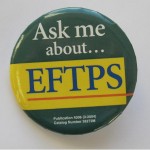
While the majority of Americans get a tax refund from the Internal Revenue Service each year, there are many taxpayers who owe and some who can’t pay the tax all at once. The IRS has a number of ways for people to pay their tax bill.
The IRS has announced an effort to help struggling taxpayers get a fresh start with their tax liabilities. The goal of this effort is to help individuals and small business meet their tax obligations, without adding unnecessary burden. Specifically, the IRS has announced new policies and programs to help taxpayers pay back taxes and avoid tax liens.
Here are ten tips for taxpayers who owe money to the IRS.
- Tax bill payments If you get a bill this summer for late taxes, you are expected to promptly pay the tax owed including any penalties and interest. If you are unable to pay the amount due, it is often in your best interest to get a loan to pay the bill in full rather than to make installment payments to the IRS.
- Additional time to pay Based on your circumstances, you may be granted a short additional time to pay your tax in full. A brief additional amount of time to pay can be requested through the Online Payment Agreement application at www.irs.gov or by calling 800-829-1040.
- Credit card payments You can pay your bill with a credit card. The interest rate on a credit card may be lower than the combination of interest and penalties imposed by the Internal Revenue Code. To pay by credit card contact one of the following processing companies: Link2Gov at 888-PAY-1040 (or www.pay1040.com), RBS WorldPay, Inc. at 888-9PAY-TAX (or www.payUSAtax.com), or Official Payments Corporation at 888-UPAY-TAX (orwww.officialpayments.com/fed).
- Electronic Funds Transfer You can pay the balance by electronic funds transfer, check, money order, cashier’s check or cash. To pay using electronic funds transfer, use the Electronic Federal Tax Payment System by either calling 800-555-4477 or using the online access at www.eftps.gov.
- Installment Agreement You may request an installment agreement if you cannot pay the liability in full. This is an agreement between you and the IRS to pay the amount due in monthly installment payments. You must first file all required returns and be current with estimated tax payments.
- Online Payment Agreement If you owe $25,000 or less in combined tax, penalties and interest, you can request an installment agreement using the Online Payment Agreement application atwww.irs.gov.
- Form 9465 You can complete and mail an IRS Form 9465, Installment Agreement Request, along with your bill in the envelope you received from the IRS. The IRS will inform you (usually within 30 days) whether your request is approved, denied, or if additional information is needed.
- Collection Information Statement You may still qualify for an installment agreement if you owe more than $25,000, but you are required to complete a Form 433F, Collection Information Statement, before the IRS will consider an installment agreement.
- User fees If an installment agreement is approved, a one-time user fee will be charged. The user fee for a new agreement is $105 or $52 for agreements where payments are deducted directly from your bank account. For eligible individuals with lower incomes, the fee can be reduced to $43.
- Check withholding Taxpayers who have a balance due may want to consider changing their W-4, Employee’s Withholding Allowance Certificate, with their employer. A withholding calculator atwww.irs.gov can help taxpayers determine the amount that should be withheld.
For more information about the Fresh Start initiative, installment agreements and other payment options visit www.irs.gov. IRS Publications 594, The IRS Collection Process, and 966, Electronic Choices to Pay All Your Federal Taxes, also provide additional information regarding your payment options. These publications and Form 9465 can be obtained from www.irs.gov or by calling 800-TAX-FORM (800-829-3676).

If you have any Excise Tax claims with the IRS, use http://www.taxexcise.com The ONE STOP SHOP for all your Excise Tax needs. For any further support call us at 1-866-245-3918 or simple write to us at support@taxExcise.com
Links:
- Publication 594, The IRS Collection Process (PDF)
- Publication 966, Electronic Choices to Pay All Your Federal Taxes (PDF)
- Form 9465, Installment Agreement (PDF)
- Excise Tax Blog, click here
Issue Number: IRS Summertime Tax Tip 2011-14




 Trucks are use as the preferred mode of transportations across states in USA. The people rely deeply on the trucking business to convey and transport the merchandises that make every day existence reachable, making truck drivers the fortitude of the present American economic system. Trucking jobs are a good way to make a decent income and to provide your family needs.
Trucks are use as the preferred mode of transportations across states in USA. The people rely deeply on the trucking business to convey and transport the merchandises that make every day existence reachable, making truck drivers the fortitude of the present American economic system. Trucking jobs are a good way to make a decent income and to provide your family needs. Taxpayers can authorize an electronic funds withdrawal, use a credit or debit card or enroll in the U.S. Treasury’s Electronic Federal Tax Payment System
Taxpayers can authorize an electronic funds withdrawal, use a credit or debit card or enroll in the U.S. Treasury’s Electronic Federal Tax Payment System 